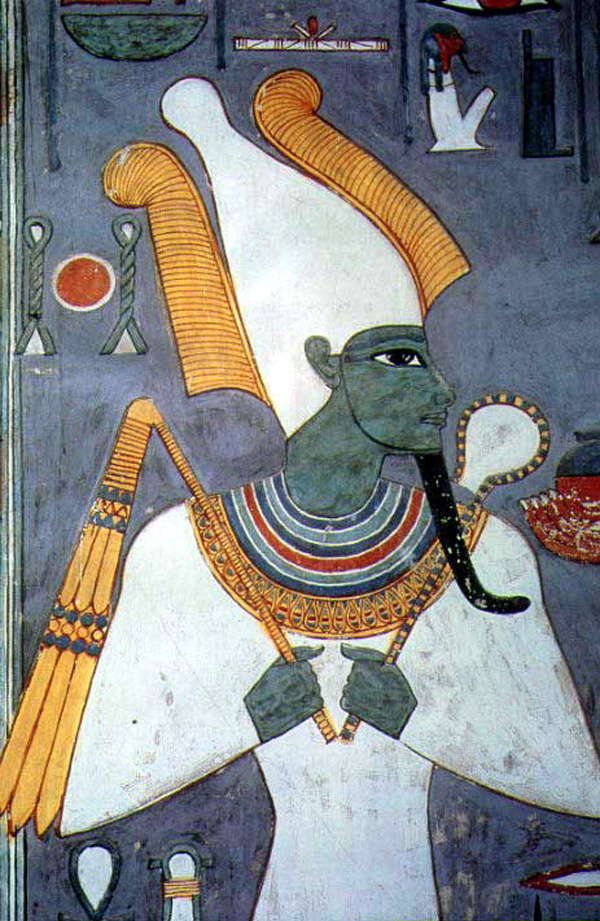Osiris 1923
Osiris was a divine king of ancient Egypt, later god of the dead. His myth is among the oldest of mankind, extending back to the 24th century BCE. It centers on Osiris’ death and resurrection, and is the primary source of vegetative-based religions such as Christianity, revolving about the natural cycle of plant death and rebirth, used as a metaphor for humanity in its life and afterlife.
Osiris was killed by his jealous brother Set, who sought his throne, but was revived by his sister-wife Isis, only to be destroyed once more by Set. After this second death, Osiris remains in the underworld as a judge and god of the dead. [For a fuller version of this myth, see the entry on asteroid Isis.] The gods Thoth and Anubis work to restore Osiris to a semblance of life, and Osiris effectively becomes the first mummy, with his embalming rituals passed down to his successors, the pharaohs of Egypt.
Astrologically, Osiris acts as an indicator of death, by which we mean “change and transformation.” It can be a literal death, or a symbolic one, any major disruption or change in circumstance, status or condition. There is also an accent on death-and-rebirth, renewal, and revivification or resuscitation.


One Trackback
[…] 1) Alex Miller: Osiris 1923 2) Mark Andrew Holmes: Osiris 3) Neptune’s Aura Astrology: Osiris […]